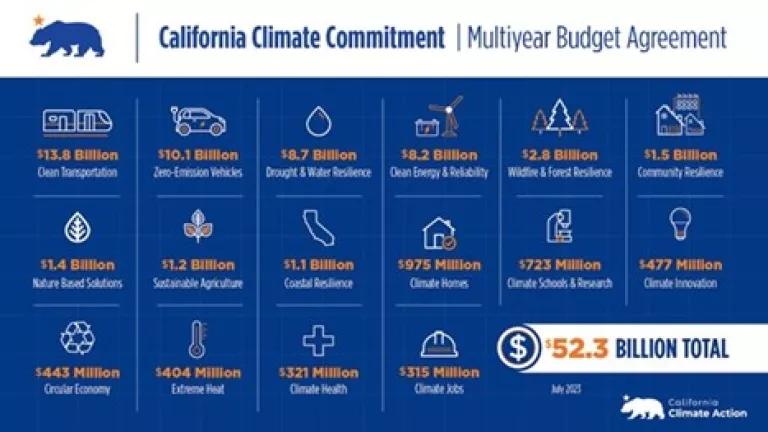California has long been a national and international leader in energy efficiency, but how do we continue to stay ahead of the pack?
The state’s utilities are among those seeking new ways to keep California at the forefront by dramatically scaling up efforts to do more with less energy. Last week they hosted a forum in San Francisco entitled “Building a More Energy Efficient Future: A National Perspective,” which was attended by more than 150 interested parties including regulators and staff from the California Public Utilities Commission and the California Energy Commission, representatives of both investor owned and publicly owned utilities, industry leaders, implementers, advocates, and academics from across the country.
The event celebrated California’s strong efficiency achievements (of which there are many), and explored ways to build on our strong energy policy foundation. In addition, it offered an opportunity to learn from models across the country (such as the Northwest Energy Efficiency Alliance and the Northeast Energy Efficiency Partnerships), as well as from implementers, efficiency leaders, and utilities to see how we could do even better.
A Look at Our Successes
California has much to be proud of. As I recently noted, the 2013 Next 10 report California Green Innovation Index highlights how climate policies, including energy efficiency, are great for the state. They support a growing economy, save Californians money, and result in significant environmental benefits. For example, the state’s efficiency policies have helped achieve:
- Residential electricity bills that are 25 percent lower than the rest of the nation;
- Energy savings equivalent to avoiding the power needed from 30 large power plants;
- Job growth, both directly related to clean energy installations (like efficiency upgrades and renewable energy), and also due to customers’ spending their energy bill savings in the more job-intensive local economy.
Collaboration is the Path Forward
Participants attended last week’s forum with the common aspiration of ensuring California remains at the cutting edge of capturing energy efficiency to save customers energy and reduce pollution. Presenters discussed how best to implement strong energy policies, enable innovation, and build a collaborative partnership model to achieve even more energy savings as the cheapest and fastest way to meet our power needs and climate goals. Take the following models, for example:
- Transparent Technical Forums: Representatives from NEEP and the Northwest Regional Technical Forum (RTF) described their approach to address critical technical and planning issues in a transparent and public process (such as using a group of technical experts in a public forum to decide how much energy a particular product or program saves). This approach resolves issues in an open manner, while building consensus, buy-in, and trust.
- Collaborative Program Planning: The Western HVAC Alliance is a California model that highlights the benefits of working together to design innovative programs with industry, utilities, and regulators (such as how best to incentivize manufacturers and retailers to sell efficient air conditioners and heating systems for homes).
- Path toward Market Transformation: Moving markets (like making sure the only TVs available for sale are efficient TVs) requires a long-term view and collaboration across multiple market players and stakeholders (such as manufacturers, retailers, implementers, and utilities). The NEEA model shows how working together – including on a regional basis – will result in greater leverage to transform markets.
- Targeted Energy Efficiency: ConEdison has a program model whereby they target energy efficiency efforts to particular areas of high energy use or where the system need in Manhattan is the greatest. This enables the utility to avoid - or delay - costly electricity infrastructure upgrades.
Although not discussed at the forum, an additional collaborative method worth noting is an approach to program planning used in the Northeast. Massachusetts, Connecticut, and Rhode Island each established a multi-stakeholder planning forum or “council,” with the goal of increasing collaboration and trust among stakeholders. To do so, these states created a process by which key industry players, stakeholders, and utilities work together on a regular basis to design programs and resolve as many issues as possible prior to formal submissions to their state regulators. This effort has not only reduced contention, but enhanced program design and stakeholders’ ability to work together.
What’s Next for California?
California has been doing a great job of achieving energy savings that bring substantial benefits to customers while enabling unique partnerships for delivery – relying on utilities, third-party providers, and local governments as integrated partners in providing efficiency services to customers. However, we can and must do more to meet our climate goals and ensure our efficiency efforts are saving customers as much as possible.
Over the coming year and a half, the California Public Utilities Commission will be planning the next phase of energy efficiency efforts in the state. This is the time to evaluate how the current system is operating and figure out how we can build on what is working well and – when necessary – move toward a better process that serves our common agenda of substantially scaling up efficiency.
Will it take time and will we have growing pains? Of course. But last week’s forum highlighted a number of models that California can look to for guidance and showed that regulators and stakeholders alike are eager to figure out how California can move toward a system of greater transparency, partnership, and collaboration. Taking the time to create such an environment and ensuring Californians see even more benefits from energy efficiency is well worth the effort.




